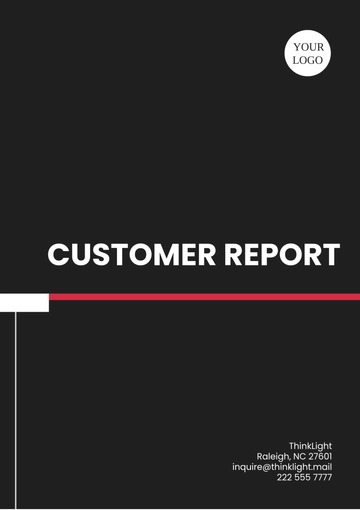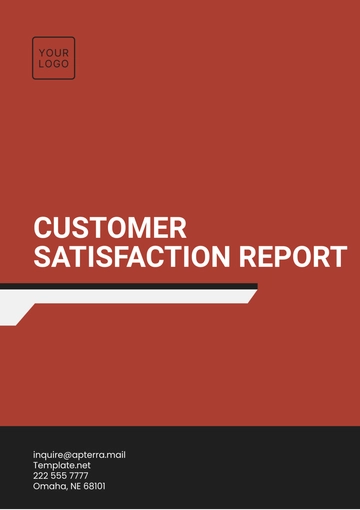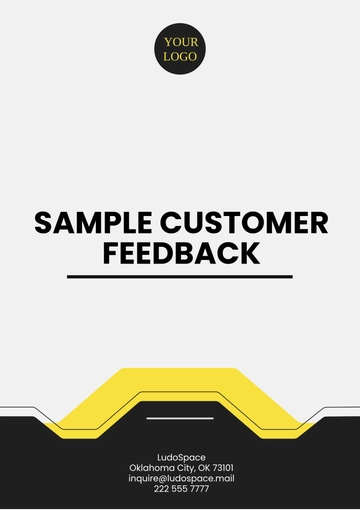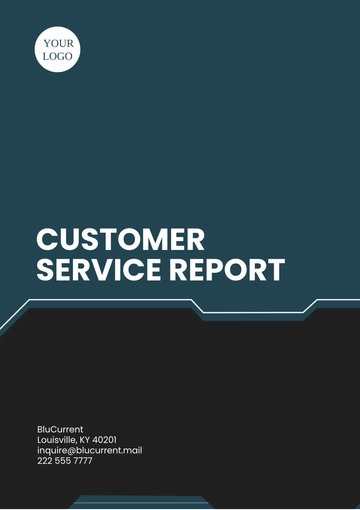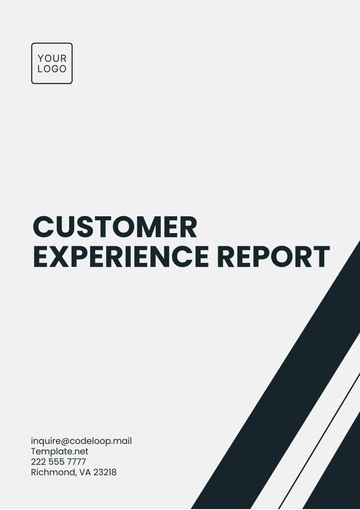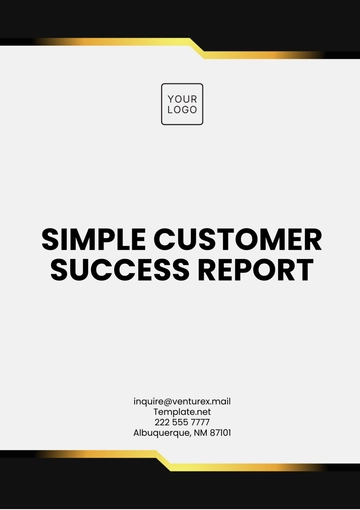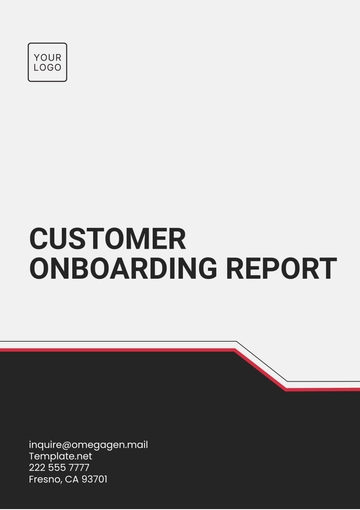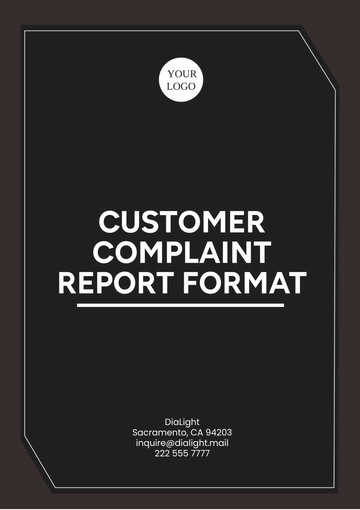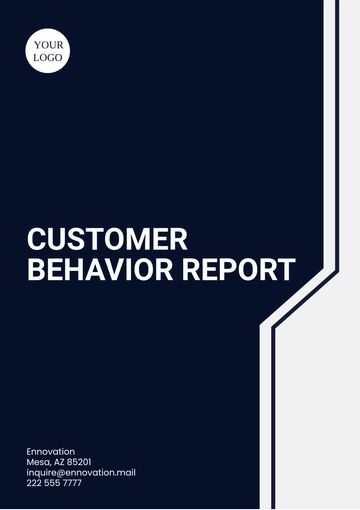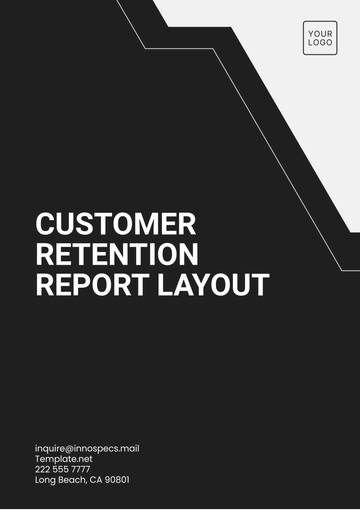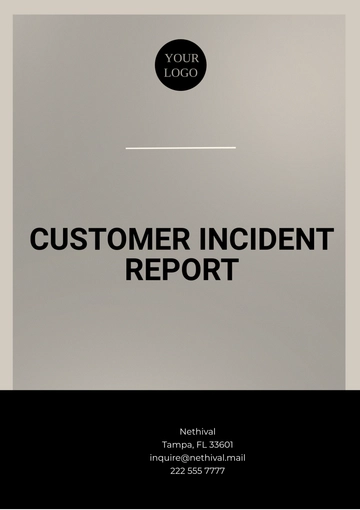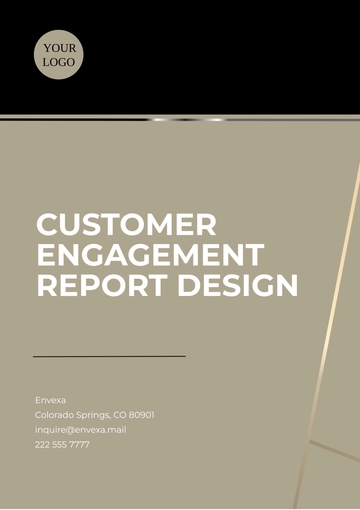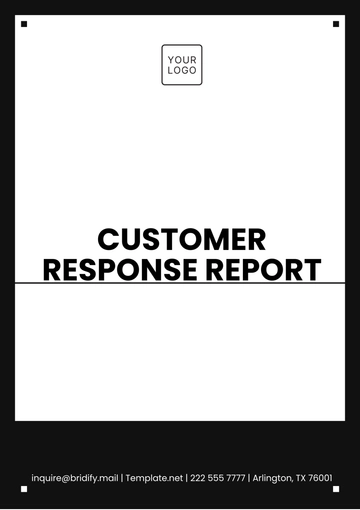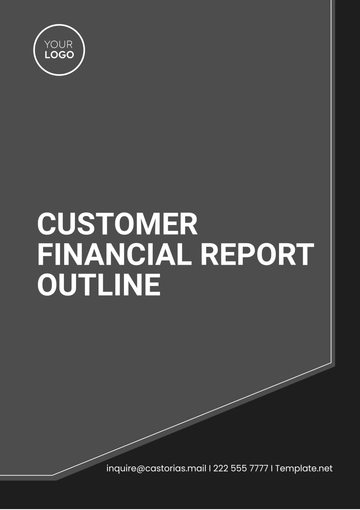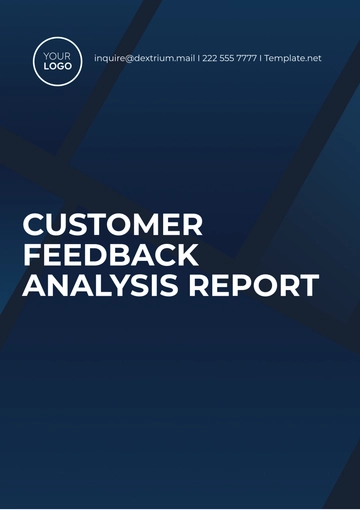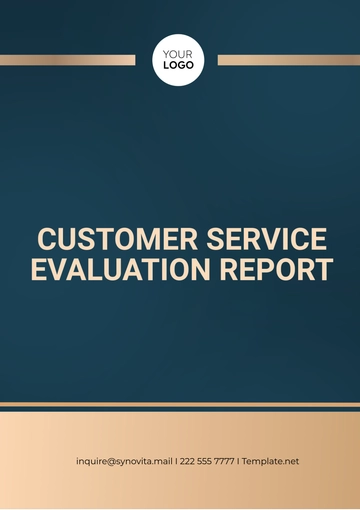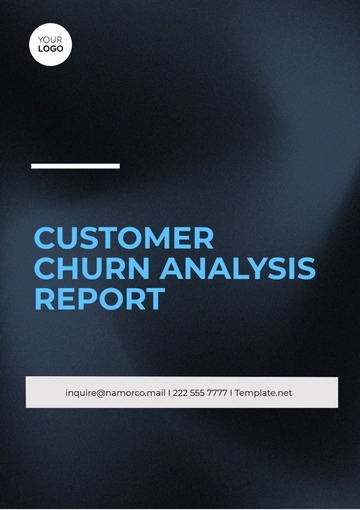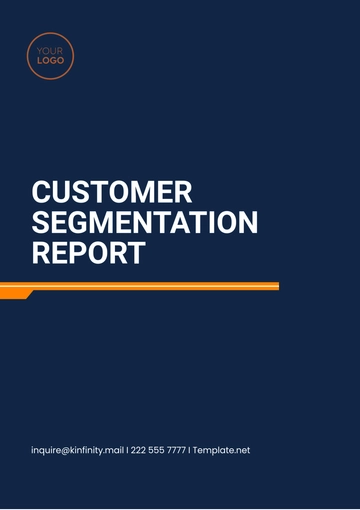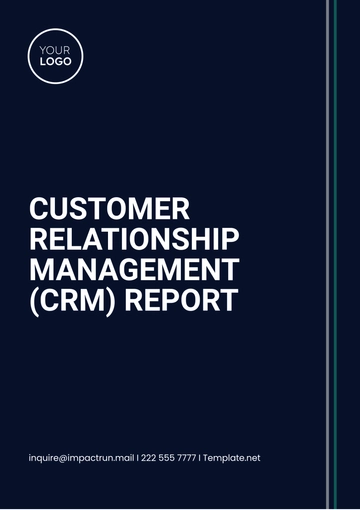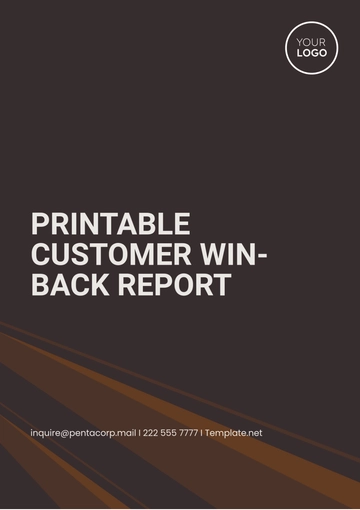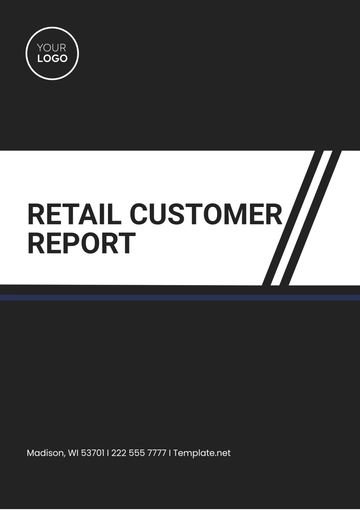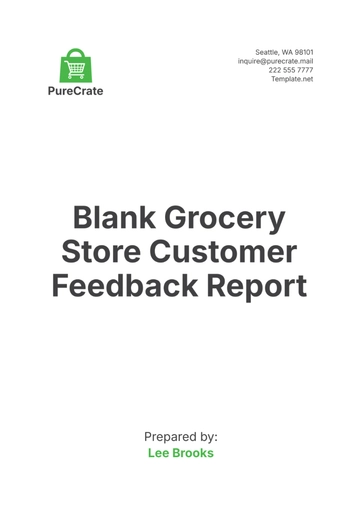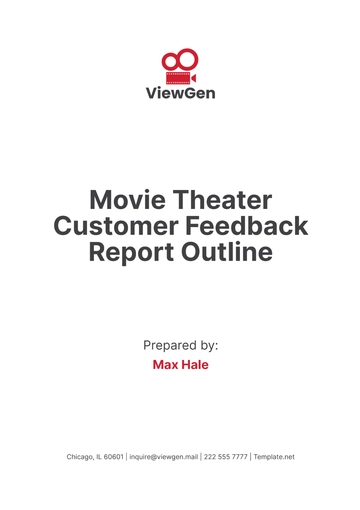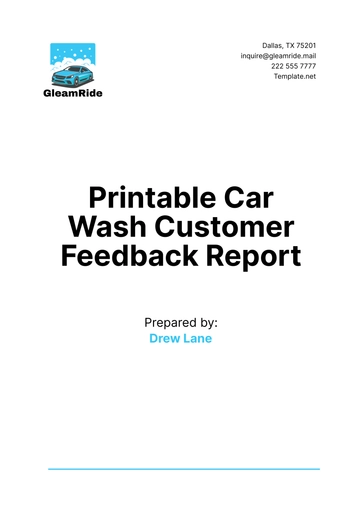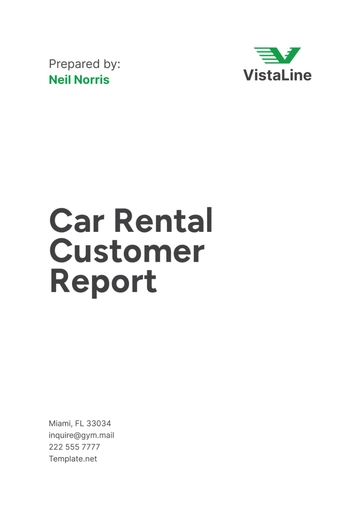Free Printable Customer Win-back Report
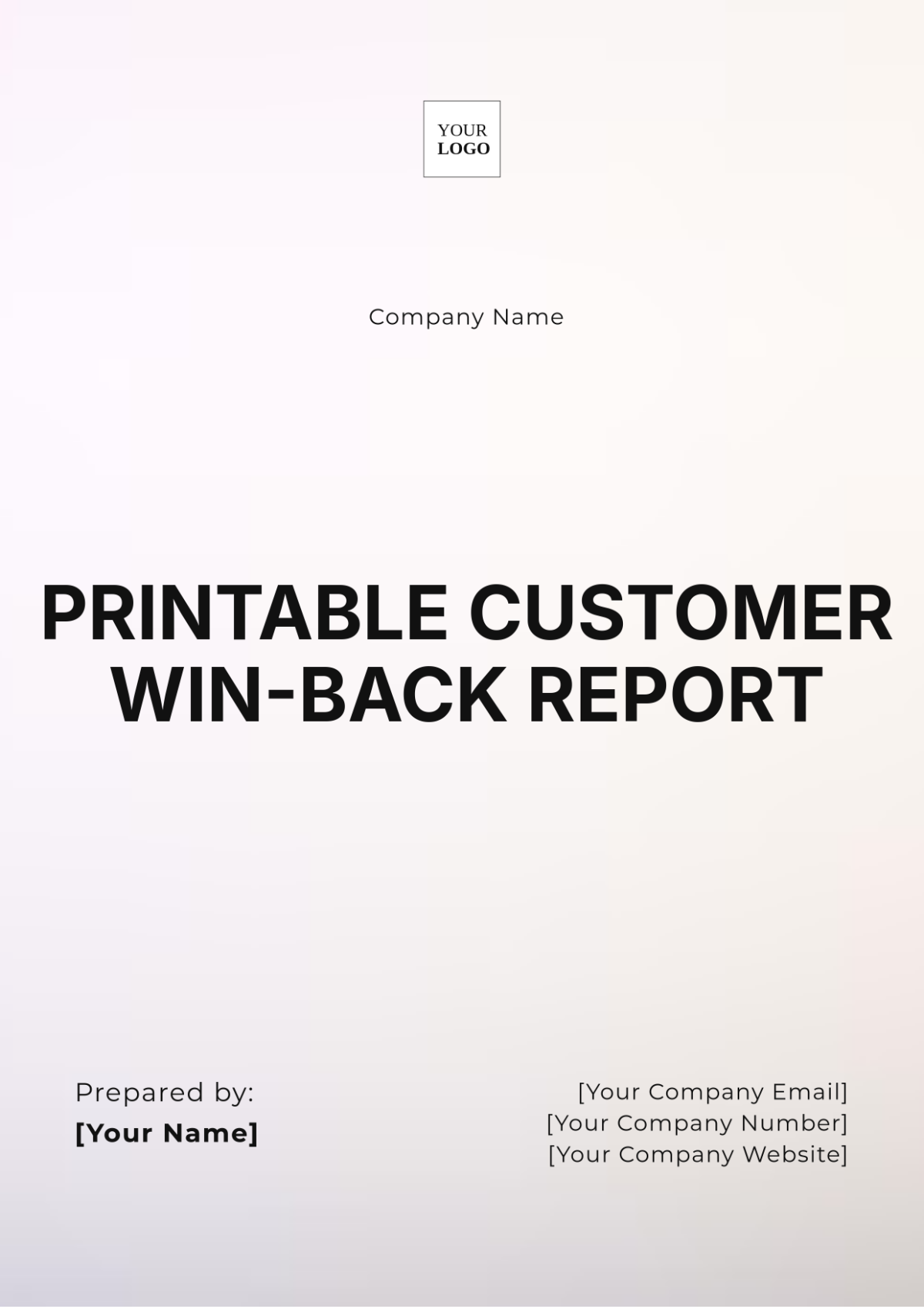
Prepared by: [Your Name]
Company: [Your Company Name]
Date: [Date]
I. Introduction
This report provides comprehensive insights into reclaiming lost customers through a data-driven analysis of customer churn and strategic recommendations for re-engagement. Retaining existing customers and bringing back those who have churned is often more cost-effective than acquiring new clients, and is essential for maintaining long-term business growth. By understanding the reasons for defection and implementing targeted win-back strategies, businesses can regain lost revenue and improve customer loyalty. This report will guide you through a detailed breakdown of customer churn trends, reasons for defection, strategic approaches, and actionable steps to strengthen your customer relationships.
II. Customer Churn Analysis
To effectively win back customers, it is important to understand the underlying trends in customer attrition. This section analyzes recent churn data to identify patterns and focus areas where customer loss is most pronounced. Through a detailed examination of key metrics, you can target the most impactful win-back strategies.
Total number of customers lost in the last fiscal year:
5,000 customers
Churn rate over the year: 5.9%
Churn rate by month and quarter:
Monthly and quarterly churn rates provide insights into seasonality and recurring trends in customer loss.
Period | Churn Rate (%) |
|---|---|
Q1 | 5.0 |
Q2 | 6.2 |
Q3 | 5.8 |
Q4 | 6.5 |
Segment-specific churn statistics:
Analyzing churn rates by customer segments allows us to pinpoint the areas where interventions are most needed.
SMEs (Small & Medium Enterprises): 7.2%
Enterprise Clients: 4.5%
Retail Customers: 6.0%
Geographical churn trends:
Churn rate varied across regions, with higher losses in certain markets:
North America: 4.8%
Europe: 6.3%
Asia-Pacific: 7.1%
III. Reasons for Defection
This section delves into the reasons why customers chose to leave, with insights backed by survey responses, customer interviews, and direct feedback from former clients. Understanding these reasons helps craft specific win-back strategies.
A. Service Issues
A significant number of customers left due to service-related issues, including:
Slow response times: 30% of respondents highlighted delays in customer support as a key reason for defection.
Unresolved complaints: Many customers felt that their issues were not adequately addressed, leading to frustration.
B. Competitor Offerings
Survey data revealed that many former customers were drawn to competitors who offered:
Lower pricing models: 25% switched to competitors offering more competitive rates.
Innovative features: Some customers left because competitor products were more feature-rich or cutting-edge, particularly in the technology sector.
C. Product/Service Limitations
Certain customers expressed dissatisfaction with the following limitations in the product or service offerings:
Performance issues: 18% of customers cited consistent performance problems.
Outdated features: Feedback indicated that customers felt the product lacked necessary updates or failed to keep pace with industry advancements.
D. Poor Communication
Lack of proactive engagement: 12% of customers mentioned they had no significant communication or check-ins from the company, making them feel undervalued.
IV. Win-back Strategies
This section outlines the targeted strategies designed to regain lost customers. These approaches are based on customer feedback and market trends, focusing on personalized re-engagement efforts.
Email Outreach Campaigns with Personalized Offers:
Create segmented email campaigns tailored to individual customer preferences, offering exclusive discounts or customized solutions based on their previous purchases or usage patterns.
Feedback Loops to Address and Resolve Specific Issues:
Establish a dedicated feedback channel where former customers can provide detailed insights about their dissatisfaction. Promptly address these concerns by offering solutions or compensation as part of the win-back process.
Loyalty Programs Tailored for Returning Customers:
Implement a win-back loyalty program that offers special benefits such as additional points, discounts, or free services to customers who return after a period of inactivity.
Partnership and Bundle Offers to Enhance Value:
Consider creating bundled offers that pair your product/service with complementary services or products from strategic partners, adding extra value to entice customers back.
Re-engagement Calls from Account Managers:
Direct one-on-one outreach by account managers can strengthen the personal touch. Offer solutions that specifically address the reasons why the customer left and provide immediate value.
V. Actionable Recommendations
Based on the analysis of churn data and feedback, we recommend implementing the following actions to enhance customer retention and improve win-back rates:
Enhance Customer Service Training
Invest in comprehensive training programs for customer support teams to improve their responsiveness, problem-solving capabilities, and communication skills. This will help address the service-related issues that drove many customers away.
Conduct Regular Market Analysis
Stay ahead of competitors by conducting regular market analysis to adjust pricing models, introduce innovative features, and ensure the company's offerings remain competitive.
Develop a Dedicated Win-back Team
Create a specialized team focused solely on re-engaging lost customers. This team should regularly reach out to former clients, manage follow-ups, and propose tailored win-back solutions.
Implement Product/Service Improvements Based on Feedback
Regularly review customer feedback and implement improvements to address product or service limitations. A pilot program for testing new features or enhancements based on customer feedback can demonstrate your commitment to continuous improvement.
Proactive Communication Campaigns
Launch proactive communication campaigns to check in on current customers before they consider leaving. Customer health checks and personalized messages can help identify dissatisfaction early and reduce churn.
VI. Key Metrics & Outcomes
This section outlines the critical metrics to track the success of your win-back strategies and measure the overall impact of re-engagement efforts.
Metric | Outcome |
|---|---|
Re-engagement Rate | 15% |
Revenue Recouped | $200,000 |
Customer Satisfaction Score | 8% Increase |
Net Promoter Score (NPS) | 10-point gain |
Additionally, the success of specific win-back initiatives can be tracked through detailed metrics such as:
Percentage of customers re-engaged through loyalty programs: 12%
Conversion rate of email outreach campaigns: 18%
Average customer lifetime value (CLTV) of re-engaged clients: $1,500
VII. Conclusion
Winning back lost customers is an essential strategy for maintaining business continuity and profitability. By understanding the primary drivers behind customer attrition and implementing personalized, data-driven win-back strategies, businesses can recapture lost revenue and strengthen relationships with their customer base. The strategies and recommendations outlined in this report provide a robust framework to help businesses enhance their customer retention efforts and drive sustainable growth in the long term.
- 100% Customizable, free editor
- Access 1 Million+ Templates, photo’s & graphics
- Download or share as a template
- Click and replace photos, graphics, text, backgrounds
- Resize, crop, AI write & more
- Access advanced editor
Revitalize your customer engagement strategy with the Printable Customer Win-back Report Template from Template.net. This customizable and fully editable template allows you to create targeted win-back strategies with ease. Perfect for re-engaging lost customers, it’s editable in our Ai Editor Tool, ensuring you can tailor each report to your specific needs and preferences for maximum impact.
You may also like
- Sales Report
- Daily Report
- Project Report
- Business Report
- Weekly Report
- Incident Report
- Annual Report
- Report Layout
- Report Design
- Progress Report
- Marketing Report
- Company Report
- Monthly Report
- Audit Report
- Status Report
- School Report
- Reports Hr
- Management Report
- Project Status Report
- Handover Report
- Health And Safety Report
- Restaurant Report
- Construction Report
- Research Report
- Evaluation Report
- Investigation Report
- Employee Report
- Advertising Report
- Weekly Status Report
- Project Management Report
- Finance Report
- Service Report
- Technical Report
- Meeting Report
- Quarterly Report
- Inspection Report
- Medical Report
- Test Report
- Summary Report
- Inventory Report
- Valuation Report
- Operations Report
- Payroll Report
- Training Report
- Job Report
- Case Report
- Performance Report
- Board Report
- Internal Audit Report
- Student Report
- Monthly Management Report
- Small Business Report
- Accident Report
- Call Center Report
- Activity Report
- IT and Software Report
- Internship Report
- Visit Report
- Product Report
- Book Report
- Property Report
- Recruitment Report
- University Report
- Event Report
- SEO Report
- Conference Report
- Narrative Report
- Nursing Home Report
- Preschool Report
- Call Report
- Customer Report
- Employee Incident Report
- Accomplishment Report
- Social Media Report
- Work From Home Report
- Security Report
- Damage Report
- Quality Report
- Internal Report
- Nurse Report
- Real Estate Report
- Hotel Report
- Equipment Report
- Credit Report
- Field Report
- Non Profit Report
- Maintenance Report
- News Report
- Survey Report
- Executive Report
- Law Firm Report
- Advertising Agency Report
- Interior Design Report
- Travel Agency Report
- Stock Report
- Salon Report
- Bug Report
- Workplace Report
- Action Report
- Investor Report
- Cleaning Services Report
- Consulting Report
- Freelancer Report
- Site Visit Report
- Trip Report
- Classroom Observation Report
- Vehicle Report
- Final Report
- Software Report
